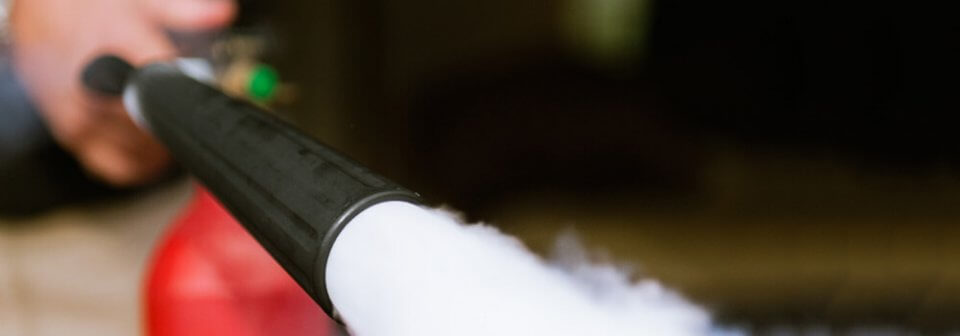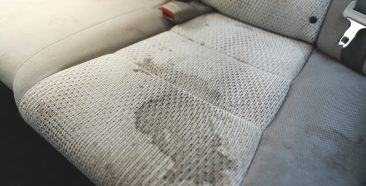
Not that you ever expect to have to use one – but, it’s when you suddenly need a fire extinguisher that you’re glad to have one. Still, many homes don’t have a fire extinguisher or the right type on hand.
Fires and fire extinguishers are not all alike and using the wrong one on a particular type of fire can cost you valuable time – not to mention your home. That’s why it’s so important to know the five different fires and associated types of fire extinguishers, according to the Fire Equipment Manufacturers’ Association:
- Class A: Fires in ordinary combustibles, such as wood, paper, cloth, etc.
- Class B: Fires in flammable liquids, like gasoline, or flammable gasses, such as propane.
- Class C: Fires in energized electrical equipment, such as appliances or motors.
- Class D: Fires in combustible metals.
- Class K: Fires in cooking oils and greases, such as animal and vegetable fats.
Choosing the right fire extinguisher
When choosing the right fire extinguisher to best protect your home, keep in mind that each fire classification has a matching extinguisher. However, using an extinguisher rated for a Class B fire on a different fire could actually be dangerous. So, depending on the type of fire you may encounter in your home, you’d be better off choosing a multi-purpose extinguisher rated for Class A, B, and C fires to cover all your bases.
This type of extinguisher is available at most home improvement stores. They’re effective on fires in the general living area and garage as well as on small grease fires.
You also want an extinguisher that:
- Is large enough to put out a small fire.
- Isn’t too heavy for you or a family member to handle safely.
- Carries an independent testing laboratory label.
- Can be used on every floor in your home and the garage.
Proper use of a fire extinguisher
Having a fire extinguisher and not knowing how to use it is a bad as not having one. Before you attempt to use an extinguisher, familiarize yourself with how it works. In addition, don’t try to fight a fire without first considering:
- If the fire is small enough to contain and put out
- If you’re safe from potentially toxic smoke
- If you can safely escape should the fire get out of hand
- If your instincts tell you to choose flight over fight
Proper maintenance of a fire extinguisher
Contrary to what you might think, there’s such a thing as proper maintenance of a fire extinguisher. Just buying one and forgetting it exists until you suddenly need it one day can put your safety and your home at risk. In fact, it may not work.
The U.S. Fire Administration advises homeowners that some extinguishers should be shaken monthly while others need to be pressure tested periodically. All fire extinguishers come with specific instructions. Follow the manufacturer’s recommendations for proper storage and maintenance. They also suggest checking the extinguisher regularly for damage, rust or dirt – all of which could affect its performance in an emergency.
Your safety and the safety of your loved ones comes first. Use common sense by gauging the size of the fire before attempting to fight it yourself. If you have the slightest doubt you’ll be able to contain it with a fire extinguisher – call 911 – and get out!
Don’t take your homeowners insurance for granted. Make sure you’ve got sufficient coverage to repair your home should it be damaged or destroyed in a fire. And, if you feel your current premiums are too high, call Freeway Insurance at (800) 777-5620 to get a free quote or get a free online homeowners insurance quote.



